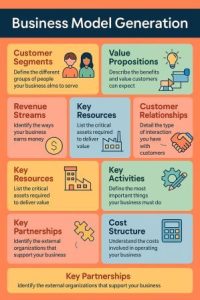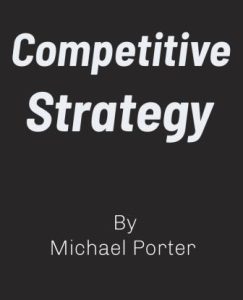Business Model Generation Summary

A business model is just a clear explanation of how your business works — how it helps people, gets your product to them, and makes money doing it.
Summary of Business Model Generation
Ever feel like you’re full of ideas but stuck when it comes to turning them into a real business?
You’re not the only one. Having a great idea is exciting — but without a solid business model, it’s like trying to build a house without a blueprint.
That’s why Business Model Generation book is a total game changer. It doesn’t just talk about strategy — it shows you, step by step, how to design a business that actually works.
It’s simple, visual, and packed with tools that even complete beginners can use to go from “just an idea” to “this could really work.”
If you’re building a startup, a side hustle, or even just curious about how great businesses succeed — this book is your shortcut. This Business Model Generation summary will give you the core insights fast.
But fair warning: once you read it, you’ll probably want the full book by your side.
Let’s dive in.
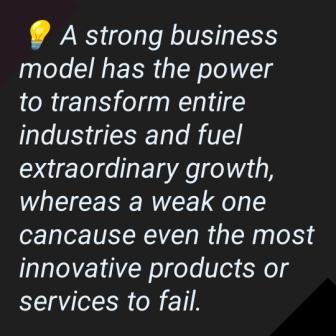
Why We Recommend this Book
The Business Model Generation book has influenced thousands of entrepreneurs, from solo creators to big names like Airbnb and Nestlé, helping them clarify, innovate, and grow their business models with confidence.
This book is used in MBA programs and by major global companies and is easy to use by anyone no matter your level.
It’s also featured in innovation workshops, startup incubators, and corporate strategy departments
Questions to Ask Before Reading Business Model Generation Book
Ask yourself these questions before going through this summary:
- Do I clearly understand how my business idea will make money?
Or am I still figuring that out? - Who exactly is my customer—and do I know what problem I’m solving for them?
Or am I assuming what they need? - Do I have a simple way to explain how my business works to someone else?
Could I sketch it out on a napkin? - What parts of my current (or future) business feel unclear or messy?
Is it the pricing? The customer path? The partnerships? - Am I trying to do too many things at once—and need a clearer structure?
Can this book help me simplify and focus? - Have I been focusing too much on my product and not enough on the business behind it?
Am I building something people want and will pay for? - Do I need a better way to plan, test, or pitch my business idea?
Could a visual tool like the Business Model Canvas help me get there faster? - Am I willing to challenge how I currently think about business models?
Ready to learn from real companies and proven frameworks? - What do I want to walk away with after reading this book?
A clearer plan? A new idea? A better understanding of what makes businesses succeed?
Business Model Generation
Introduction
Business Model Generation isn’t just a book — it’s a toolkit for turning ideas into profitable, scalable, and sustainable businesses.
Whether you’re an entrepreneur, freelancer, startup founder, or even an intrapreneur inside a company, this book gives you a clear, visual framework to understand how businesses actually function.
At the heart of it is the Business Model Canvas — a simple one-page layout that breaks down your business into 9 essential building blocks: who you serve, what you offer, how you deliver it, and how you make money. No jargon. No fluff. Just clarity.
It teaches you how to:
- Design new business models from scratch
- Innovate or improve existing ones
- Spot patterns used by successful companies like Airbnb, Apple, and Amazon
- Avoid the common traps that make ideas fail
And the best part? It’s visual. Interactive. Designed for action, not theory. Every page is full of real-world examples, diagrams, and exercises you can start using today.
If you’ve ever struggled with how to monetize your idea, get your first customers, or explain what your business actually does — this book is your cheat code.
This summary will give you a head start.
But if you’re serious about building a business that works, the full book is a must-have on your shelf.
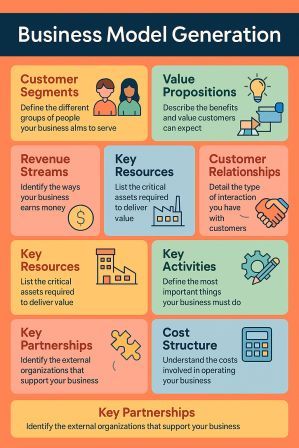
Click on the Tabs Below to Read Business Model Generation
Business Model Generation teaches entrepreneurs and innovators how to design, analyze, and reinvent business models using a clear visual framework called the Business Model Canvas.
Business Model Generation Book is for:
- Entrepreneurs
- Startup founders
- Business coaches & consultants
- Corporate innovation teams
- Students in business and design programs
- Anyone building or reinventing a business
Chapter 1: Canvas – The Business Model Canvas
What it teaches:
This chapter introduces the Business Model Canvas, a visual chart that shows the 9 building blocks of any business. It’s like a map for how your business creates, delivers, and captures value.
The 9 Building Blocks:
- Customer Segments: Who are your customers? (e.g., students, busy moms, tech startups)
- Value Propositions: What problem are you solving or what need are you satisfying?
- Channels: How do you reach your customers? (social media, website, email)
- Customer Relationships: How do you interact with them? (personal help, automation, loyalty programs)
- Revenue Streams: How do you make money? (subscriptions, one-time sales)
- Key Resources: What assets do you need? (people, tech, tools)
- Key Activities: What must you do to deliver your value? (marketing, delivery, development)
- Key Partnerships: Who helps you deliver value? (suppliers, influencers, collaborators)
- Cost Structure: What does it cost to run your business?
Real-Life Example:
Netflix’s model
Value: On-demand movies.
Channel: App and website.
Revenue: Monthly subscription.
Chapter 2: Patterns
This chapter shows common business model patterns used by top companies. Think of these as successful formulas.
Examples of Patterns:
Freemium: Give basic service for free, charge for more features (e.g., Canva, Spotify).
Multi-sided Platforms: Bring two groups together (e.g., Uber connects drivers + riders).
Long Tail: Make money from many small niche products (e.g., Etsy or YouTube creators).
Unbundling: Split up a traditional business into focused parts (e.g., newspapers turning into separate blogs and video sites).
Open Business Models: Collaborate with others and share IP (e.g., open-source software).
Why it matters:
You don’t have to invent a new model—start with a proven pattern and tweak it for your audience.
Chapter 3: Design
This chapter focuses on design thinking—which means approaching your business like a designer: with empathy, creativity, and lots of testing.
Simple Concepts from the book to note:
Personas: Describe your ideal customers (e.g., “Tola is 35, runs a small bakery, and wants to sell online.”)
Customer Journey Maps: Track how a customer discovers you, buys from you, and uses your product.
Prototyping: Sketch your business idea visually. Don’t wait till it’s perfect—test it quickly.
Real-Life Example:
Airbnb used customer journey mapping to improve how people find, book, and rate their stays.
Chapter 4: Strategy
You learn how to analyze your business model and compare it to the competition.
Tools in this chapter :
SWOT (Strengths, Weaknesses, Opportunities, Threats)
Blue Ocean Strategy: Compete in a space where no one else is (e.g., Cirque du Soleil reinvented the circus).
Environment Map: Check trends, market forces, tech shifts, and regulations.
Real-Life Example:
Apple didn’t just sell phones—they built an entire ecosystem (App Store, iCloud) to differentiate and win in a “blue ocean.”
Chapter 5: Process
This chapter walks you through how to go from idea to real business model step-by-step.
The 5 Steps:
Mobilize: Gather your team and tools.
Understand: Study your market and customers.
Design: Create and tweak several business model options.
Implement: Test and launch your model.
Manage: Adapt your model as your business grows.
Real-Life Example:
Many food delivery startups started by testing in one neighborhood, then grew city by city based on feedback.
Chapter 6: Outlook
This chapter encourages you to look beyond today’s business model and think about how the world is changing.
Key Ideas:
- Digital transformation changes customer expectations.
- Business models are not one-time creations. They evolve.
- The future belongs to businesses that can pivot fast.
Real-Life Example:
Kodak stuck with film. Instagram embraced mobile photo sharing. Guess who’s still around?
Chapter 7: Perspectives
You hear from real companies and industry experts who used the Business Model Canvas in different ways—from startups to corporate.
Real-Life Stories:
Nespresso: Shifted from selling machines to selling recurring coffee pods (subscription model).
Xerox: Changed from selling printers to leasing and servicing them (solution-based model).
Conclusion:
Every business, big or small, needs a clear model.
You don’t need to be an MBA graduate to create one.
The Business Model Canvas is a tool you can sketch on a napkin but use to build a company.
Final Takeaway :
If you’ve ever wondered, “How does this business actually make money?” — this book helps you break that down clearly.
Here are the things you need to start doing now:
1. Visualize Your Business Model Using the Business Model Canvas (BMC).
Download our free Business Model Canvas.
How to Implement:
- Step 1: Download or draw the Business Model Canvas (BMC). (10 mins)
- Step 2: Fill in each section (Customer Segments, Value Proposition, Revenue Streams, etc.). (1-2 hours)
- Step 3: Refine and adjust based on feedback from customers or team members. (Ongoing)
Challenges & Solutions:
Challenge: Struggling to define customer segments.
Solution: Talk to real customers, conduct surveys, or use existing market research.
Measurable Metrics:
Completion rate of the BMC (How many sections are clearly defined?)
Customer feedback on the clarity of your value proposition
2. Identify & Improve Your Value Proposition
How to Implement:
Step 1: List the problems your product/service solves. (30 mins)
Step 2: Use the “Jobs-To-Be-Done” framework to match your offer to customer needs. (1-2 hours)
Step 3: Validate with customer interviews or surveys. ( 1 week)
Challenges & Solutions:
Challenge: Unclear differentiation from competitors.
Solution: Use the Value Proposition Canvas to compare customer needs vs. your offer.
Measurable Metrics:
- Customer satisfaction scores
- Conversion rates (leads → customers)
3. Test Business Model Assumptions Before Scaling
How to Implement:
Step 1: List critical assumptions (e.g., “Customers will pay $50/month”). (30 mins)
Step 2: Run small-scale experiments (e.g., a pre-sale or survey). (2-4 weeks)
Step 3: Adjust based on results before investing heavily.
Challenges & Solutions:
Challenge: Resistance to testing instead of launching immediately.
Solution: Treat it as a “low-cost insurance policy” against failure.
Measurable Metrics:
- Pre-launch signups or purchases
- % of assumptions validated
4. Identify & Optimize Revenue Streams
How to Implement:
Step 1: List your current and potential revenue streams (ads, subscriptions, licensing, etc.). (1 hour)
Step 2: Analyze which are most profitable and scalable. (2 weeks)
Step 3: Test alternative pricing models (e.g., freemium, tiered pricing). (1-3 months)
Challenges & Solutions:
Challenge: Customers resist price changes.
Solution: Frame pricing changes as added value, not just higher costs.
Measurable Metrics:
- Revenue growth rate
- Customer acquisition vs. retention rates
5. Build Strategic Partnerships for Growth
How to Implement:
Step 1: Identify potential partners (suppliers, distributors, affiliates). (1 hour)
Step 2: Reach out and propose win-win collaborations. (1 week)
Step 3: Start with small, testable partnerships before scaling up. (1-6 months)
Challenges & Solutions:
Challenge: Finding partners that align with your business goals.
Solution: Offer a clear mutual benefit (e.g., cross-promotion, shared audiences).
Measurable Metrics:
- Number of strategic partnerships
- Revenue from partnership-generated sales
6. Constantly Adapt & Innovate Your Business Model
How to Implement:
Step 1: Schedule quarterly business model reviews. (1 hour per session)
Step 2: Stay updated on industry trends (competitor analysis, customer feedback). (Ongoing)
Step 3: Apply “pivot or persevere” decisions based on performance.
Challenges & Solutions:
Challenge: Resistance to change from employees/customers.
Solution: Communicate changes as necessary improvements, not instability.
Measurable Metrics:
- Success rate of new innovations
- Adaptability score from internal team feedback
Final Thoughts
This step-by-step guide helps you turn Business Model Generation’s concepts into real-world success. Start small, track progress, and adjust continuously.
Download Business Model Worksheet & Business Model Canvas Template
Use the worksheet to understand the Why and How of every part of your business model. Use the Business model canvas Template to get a One page overview of your entire business. We have provided both for you. Click on the download link to get them.
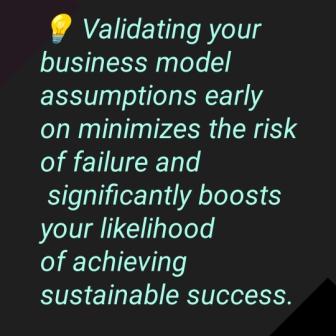
Alexander Osterwalder is a Swiss business theorist, entrepreneur, and author best known for creating the Business Model Canvas, a simple yet powerful visual tool that helps people understand, design, and innovate business models.
He earned his PhD in Management Information Systems from the University of Lausanne, where he developed the foundation of the Business Model Canvas as part of his dissertation under Professor Yves Pigneur (his co-author). Their work later evolved into the bestselling book Business Model Generation, which has been translated into over 30 languages and is used by millions of entrepreneurs, startups, and large corporations around the world.
Osterwalder is also the co-founder of Strategyzer, a company that creates tools, training, and software to help businesses build better models and strategies. Through Strategyzer, he’s helped organizations like Google, Mastercard, 3M, and the World Bank rethink how they innovate and grow.
He is widely recognized for his contribution to modern business thinking and is a sought-after speaker at global conferences on innovation, entrepreneurship, and strategy.
Book Details
Full Title: Business Model Generation: A Handbook for Visionaries, Game Changers, and Challengers
Genre: Business, Entrepreneurship, strategy & innovation, management & organisation
Language: English (also translated into 30+ languages)
Publisher: Wiley (John Wiley & Sons)
First Published: July 13, 2010
Edition: 1st Edition
Format Available: Paperback, Hardcover, Kindle (eBook), Audiobook
Illustrations:
Yes — full-colour visuals, diagrams, business model canvases, and real-life examples.
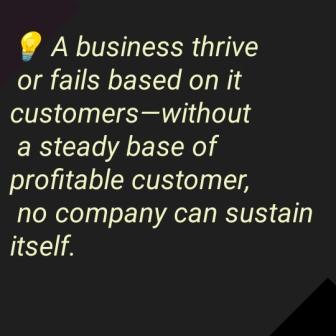
Course Curriculum
Business Model Generation Quiz
-
Start Business Model Generation Quiz

